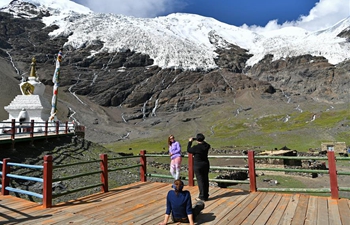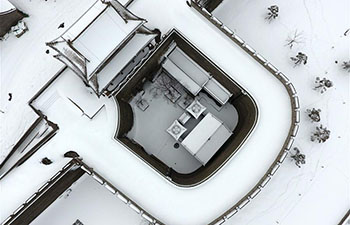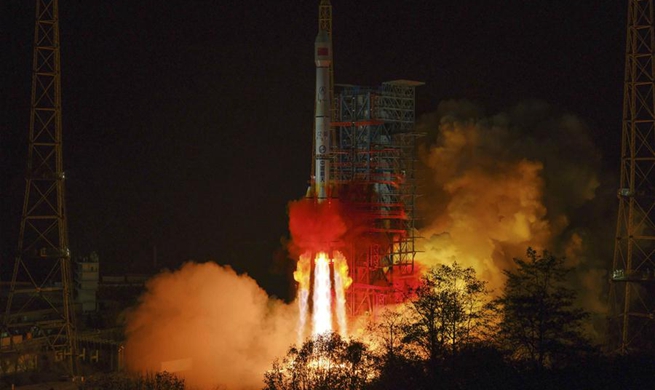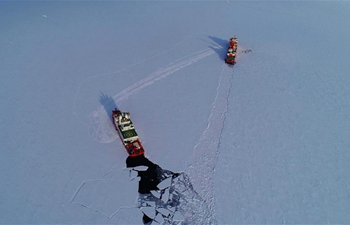by Duncan Murray
SYDNEY, Jan. 8 (Xinhua) -- The scale of Australia's ongoing bushfire crisis has astounded onlookers around the globe, with at least 25 lives have been lost, thousands of homes destroyed and an estimated 480 million animals perished.
But how did these fires get so bad, and why have the emergency services struggled to extinguish them?
It is important to note that Australia is made up of large unpopulated areas of wilderness that are extremely difficult to reach.
Once a fire starts in one of these regions, the naturally dry and dense Australian bush can quickly become consumed by flames and spread beyond what fire crews are able to contain.
Contributing to conditions this season was an ongoing drought which left fuel sources such as dead leaves and timber extremely dry and much more likely to burn.
Last year, Australia experienced its driest spring in 120 years of recorded history, according to the country's Bureau of Meteorology (BoM).
There have also been several days of strong winds and high temperatures -- conditions which can quickly spread fires and create very dangerous conditions for those trying to contain them.
Victorian State Control Centre spokesman Luke Heagarty told Xinhua that under these circumstances, blazes regularly become too dangerous for the firefighters to even consider accessing.
"They're always days that challenge us every summer, but we've had a number of them already and they're the days when we've seen the most significant fire spread occurring," Heagarty said.
In a matter of months, the fires in Australia have burnt through over 10 million hectares, an area close to the size of South Korea.
Despite Australia having the largest number of volunteer firefighters in the world, the area of land affected by the fires is simply too large and remote to deal with.
Heagarty explained that when fires reach that size they will burn, possibly for months, until the country receives significant rainfall.
"It's such a large fire area now that it would be impossible to get people fully surrounding these fires, just because it's such a difficult area to reach," he said.
Early on in the season, the firefront extended beyond 6,000 km, a distance almost twice as wide as the country itself, when the authorities have no possible options but focus on getting ahead of them and protecting the communities in their path.
When this strategy fails, devastation ensues, as has been the case throughout the summer.
Australia's leaders have been criticised for not anticipating the scale of this year's fires and better preparing for them.
Prime Minister Scott Morrison's flippant position on climate change has attracted particularly harsh rebuke.
Former NSW Fire and Rescue Commissioner Greg Mullins has been vocal in expressing his frustration at having requests for a more comprehensive response plan ignored.
Supported by other ex-fire and emergency chiefs, Mullins had called for additional aerial firefighting assets, improved hazard reduction plans and better coordination with Australia's military assets, as well as national action on climate change.
The Australian Defence Force was later deployed to assist with the firefighting operation and relief. However, there has been some criticism that their involvement was delayed and should have been more proactive.
Mullin's group also suggested that during bushfire-prone months, seasonal casual staff could be hired to bolster the number of firefighters in rural and regional areas.
This year the increased demand on fire crews prompted the federal government to offer limited financial assistance to volunteers, who put themselves in danger and spend weeks at a time away from their work and families.
Mullins was clear that the severity of this season's fires is directly linked to climate change, and that officials worldwide need to rethink their strategies in combating increasingly bad fire seasons into the future.
"In extreme conditions with extreme dryness, everything will burn, that's why we can't put these fires out," Mullins told the Australian Broadcasting Corporation.
"Fuel reduction is not a panacea. Fire fighting aircraft are not a panacea," he said, adding that the country requires "new thinking" in how to deal with it in the future.













